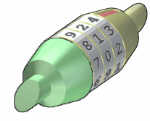tim.allan.london
New member
- Joined
- Apr 24, 2020
- Messages
- 4
I am trying to calculate the possible configurations of k pixels ON in an array of m pixels.
Can anyone help me find a way to approach this question?
Can anyone help me find a way to approach this question?

